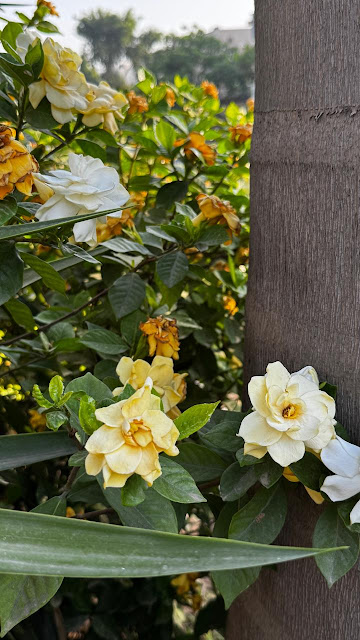Combretum constrictum – Thailand Powderpuff / سرخ کاسنی بیل یا جھاڑی
– Clusters of fiery red puffball blooms, – Tropical vine or shrub with year-round interest, – Excellent as a screen, shrub, or cascading over walls
🌿 Botanical Name: Combretum constrictum (kom-BREE-tum kon-STRIK-tum)
🌿 Family: Combretaceae (kom-breh-TAY-see-ee) – خاندان کاسنی
🧊 Hardiness Zone (USA): 9–11
📏 Height: 6–10 ft as a shrub or up to 15 ft as a vine with support
🍃 Foliage:
Broad, leathery green leaves with a soft texture
New growth often has a reddish tint
Evergreen in Lahore’s climate
🌺 Flowering Period (Lahore/Punjab):
March to October, with heaviest bloom in April–June and again post-monsoon
Dense, bright red powderpuff-like flower heads attract attention instantly
🌸 Companion Plants:
Russelia equisetiformis
Clerodendrum splendens
Mussaenda erythrophylla
Tecomaria capensis
Hibiscus rosa-sinensis
🏡 Garden Usage:
Can be trained as a large shrub, espalier, or vine
Ideal for walls, trellises, archways, and even container gardening
Striking as a standalone accent or blended with mixed tropical borders
🍈 Fruition:
Produces small, inconspicuous fruits after flowering; not edible or significant for propagation
🌱 Soil:
Prefers well-drained loamy soil with organic compost for best growth
⚖️ pH Value: Neutral to slightly acidic (6.0–7.0)
💧 Water:
Moderate watering; avoid soggy soil
Needs extra hydration in peak summer for continued blooming
🌡️ Temperature:
Tolerates Lahore’s intense summer heat well
Protect from frost in colder northern hill stations
☀️ Location Preference (sun or shade):
Full sun is best for flowering
Can tolerate partial shade but may flower less
🌾 Propagation:
Best by semi-ripe cuttings in late spring or monsoon
Rooting hormone recommended for success
🐛 Pesticides:
Generally pest-free but watch for mealybugs or spider mites
Use neem oil or mild insecticidal soap as needed
🌻 Fertilizers:
Feed with balanced NPK fertilizer every 3–4 weeks during growing season
Add compost or leaf mold to encourage lush growth and blooms
🦋 Attractiveness to Wildlife:
Highly attractive to bees, butterflies, and hummingbird-like sunbirds
A magnet for pollinators in urban gardens
🌿 Special Note – Growth in Lahore:
Combretum constrictum is a top performer in Lahore's climate—it loves the heat, tolerates dryness, and with enough sunlight, it blooms nonstop for months. Its form can be managed with pruning into either a dense shrub or a climbing vine, making it flexible for both compact and open spaces.
🌸 May this fiery powderpuff vine or shrub light up your garden corners with tropical brilliance and life.


















































